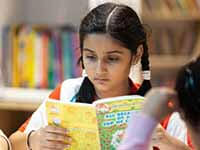At the end of a school term, most high school students panic over finals. Even the most diligent ones get worried about those final exams. With a mountain of information to go through and not enough time to get through it, you can easily get frustrated and give up. How can students get through a single pile with five more waiting? The key is developing an ability to study independently and strengthening their retention.
Here are different creative study methods you can explore for effective studying:
1. Rhyme those facts into catchy tunes
There’s a reason why Schoolhouse Rock, the cartoon show, is so famous. It turns essential facts about different topics such as science, history, or government into simple, catchy jingles that children could understand. Students can do the same with their coursework. Try and make it as playful as possible; that way, you will easily remember it. Think of how easily you remember song lyrics; now, you can recite your new study song and realize how much you remember during a test. You can even teach these catchy tunes to your fellow students and turn it into a school thing.
2. Spice up your flashcards
Flashcards are great studying tools and one of the many smart study techniques you should explore if you haven’t already. Why? Because your brain responds better to visuals instead of blocks of text, even if it’s one paragraph. That’s why magazines are so colourful and filled with different visual elements such as pictures or shapes. As you are making your flashcards, add in some flair with some drawings or doodles. These pictures can represent critical ideas you are reading about because it’s easier remembering them. You can use the symbols to note different new terms. For instance, you can use arrows to point out new words and stars to point out the definition and supporting text.
Alternatively, you can turn a chapter into a storyboard to reflect the key points in the chapter. The brain quickly remembers the sequence of events when they are in pictorial form. You can even add in some colour. Colouring can help ease any tension you feel, so you can try to use colours as a diversion tactic to relax when you feel overwhelmed. Once you feel more relaxed, it becomes easier for you to understand what you are studying.
Read it out loud as you would a play
Reading coursebooks can be tedious. After all, it consists of paragraph after paragraph of plain unending text. Even if you broke out your highlighter and did your best to highlight the areas with essential facts, going through them can still seem dull and boring. Know what would make it more fun? Reading it out loud dramatically as if you were reading a play. Cast yourself as the narrator, protagonist, and his arch-enemy and read out the different parts in different voices.
Here are a few character ideas you can try. Read out the paragraph as a Shakespearean monologue; think of Romeo and Juliet or Hamlet and channel that. You can switch things up by using the Queen’s English; everything sounds fancier in it. Try reading this paragraph in the Queen’s English; How did it sound? Alternatively, you can imagine you are giving a presidential address and getting into character, Mr or Mrs. President. You can pick any character or accent you want; the more fun it is, the easier it will be for you to recall what you read.
Turn it into a game
Everybody loves games; think of all the game shows on television. If you are studying in a group, think of how you can turn the study session into a game where everyone can participate.
For instance, you can play Monopoly, and every time someone lands on your property, they have to answer a question from you. If they answer correctly, they can keep their money; if not, they have to pay a fine. This beats staring at books for hours on end. Similarly, you can play jeopardy using questions in your study guide or around the world.
Get creative
As you study, you can create a short story of what you are studying and place yourself in the middle of it. For instance, if you are reading about the World Wars or the Neanderthals, try imagining yourself there. Drop yourself into the scene and try writing your experience from a first-person perspective; what you see, hear, smell, or feel. Similarly, you can pretend to be a reporter writing a story following the person you are reading about based on what you have learned about them so far. For instance, if Genghis Khan was to invade your country right now, would he be victorious?
Alternatively, you can create a poem about your subject matter. Take trigonometry, for instance, the terms rhyme, sine, and cosine anyone? Besides, not all poems have to rhyme. You can go free verse and fit in as many terms as you can just as long as they make sense. Whether it’s telling a story or being in the story, you are reliving the facts you have read in your mind about the characters you are formulating the stories about; this helps you get a deeper understanding of the content you are reading.
Teach it to someone else
A great way to remember what you learned is to teach it to someone else – maybe a primary school student! Or else, when your mother or father asks you how school was, take the chance to go over what you learned in chemistry today. Teach it to them, so they get it; if you can’t explain something, go back, reread it, and explain it to them all over again.
Doing these drums in whatever you learned. Alternatively, you can pretend you are teaching it to an imaginary audience. Pretend you are standing at the front of a stage, giving a lecture to about 500 people who paid top dollar to hear you speak about chemical reactions between acids and bases. Go through everything you know in great detail, highlighting how these reactions are tested and why they matter.
Creative breaks
After an intense study session, you will need a break every once in a while. Studying without breaks negates all the efforts you are putting into your studies, and you are likely to burn out faster. Take a few minutes to unwind by taking a walk and get some fresh air while stretching your legs.
If you have a dull night of studying, take breaks by rewarding yourself with something you love doing. For instance, you can play and relax for about 20 minutes or even surf the web after every hour you focus on studying. The promise of ‘you time’ makes that time you are studying look more appealing and fly by so fast.
Conclusion
There is no standard approach to studying. What works for you might not work for your friend and vice versa. Don’t ask yourself trivial questions like ‘what is the most effective study method?’. Truth is, there is no straight answer. Instead, follow a learning strategy that works best for you.
How you learn is a personal choice. For some, traditional methods such as reading in the library works. However, for others, adopting some techniques mentioned above are some of the most effective ways to study. What’s important is that you find what makes studying fun and educational for you!






















